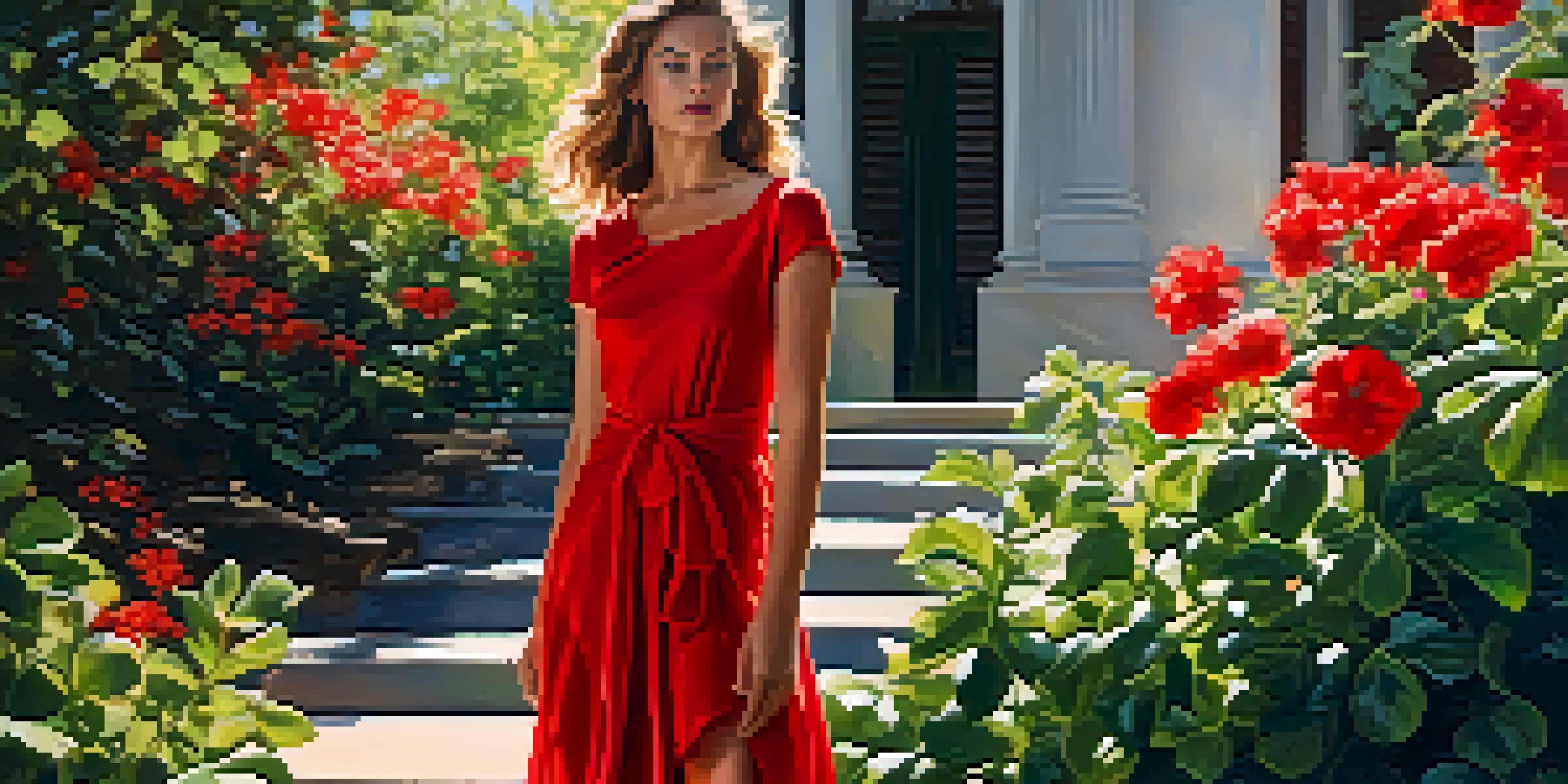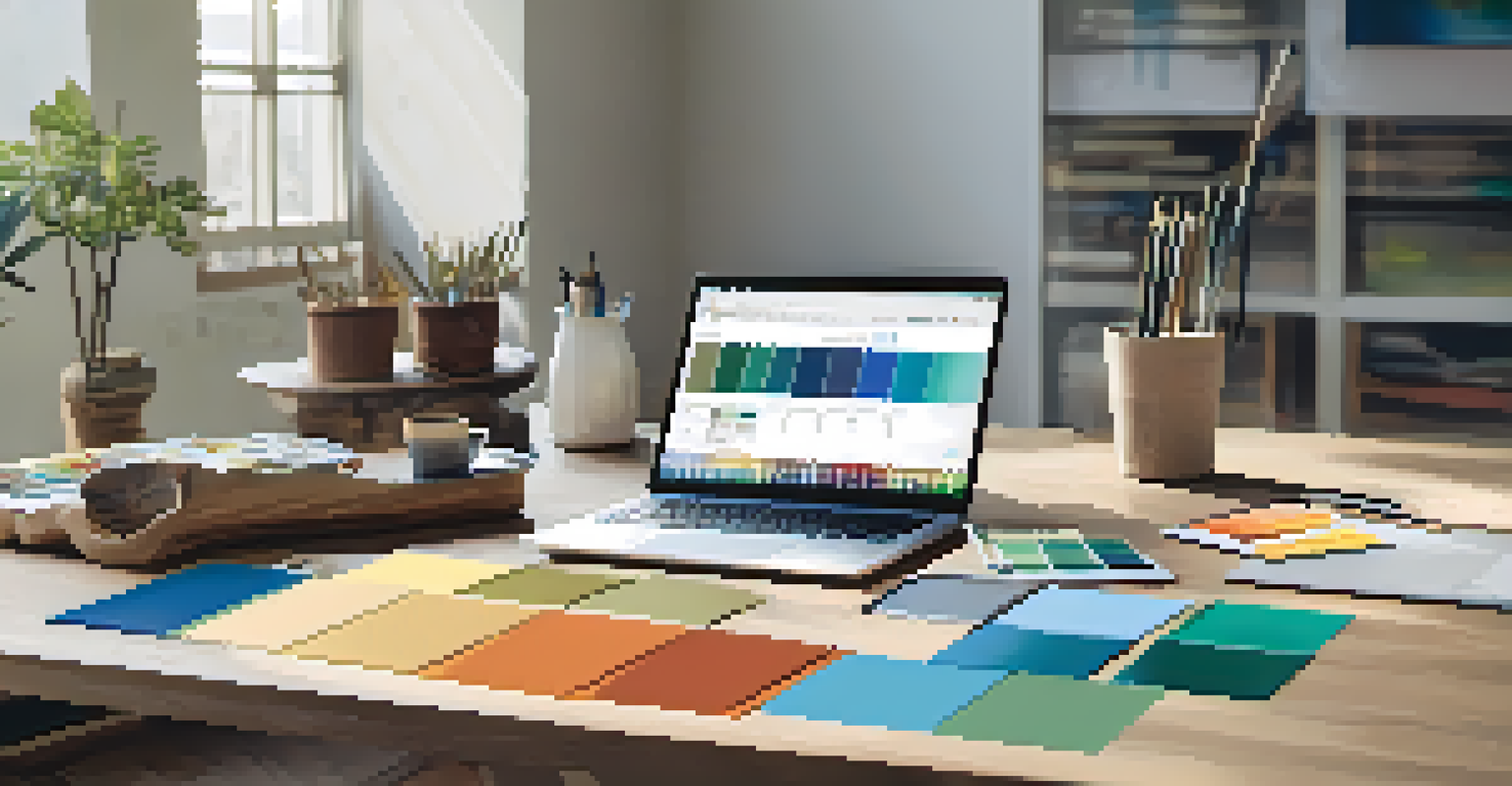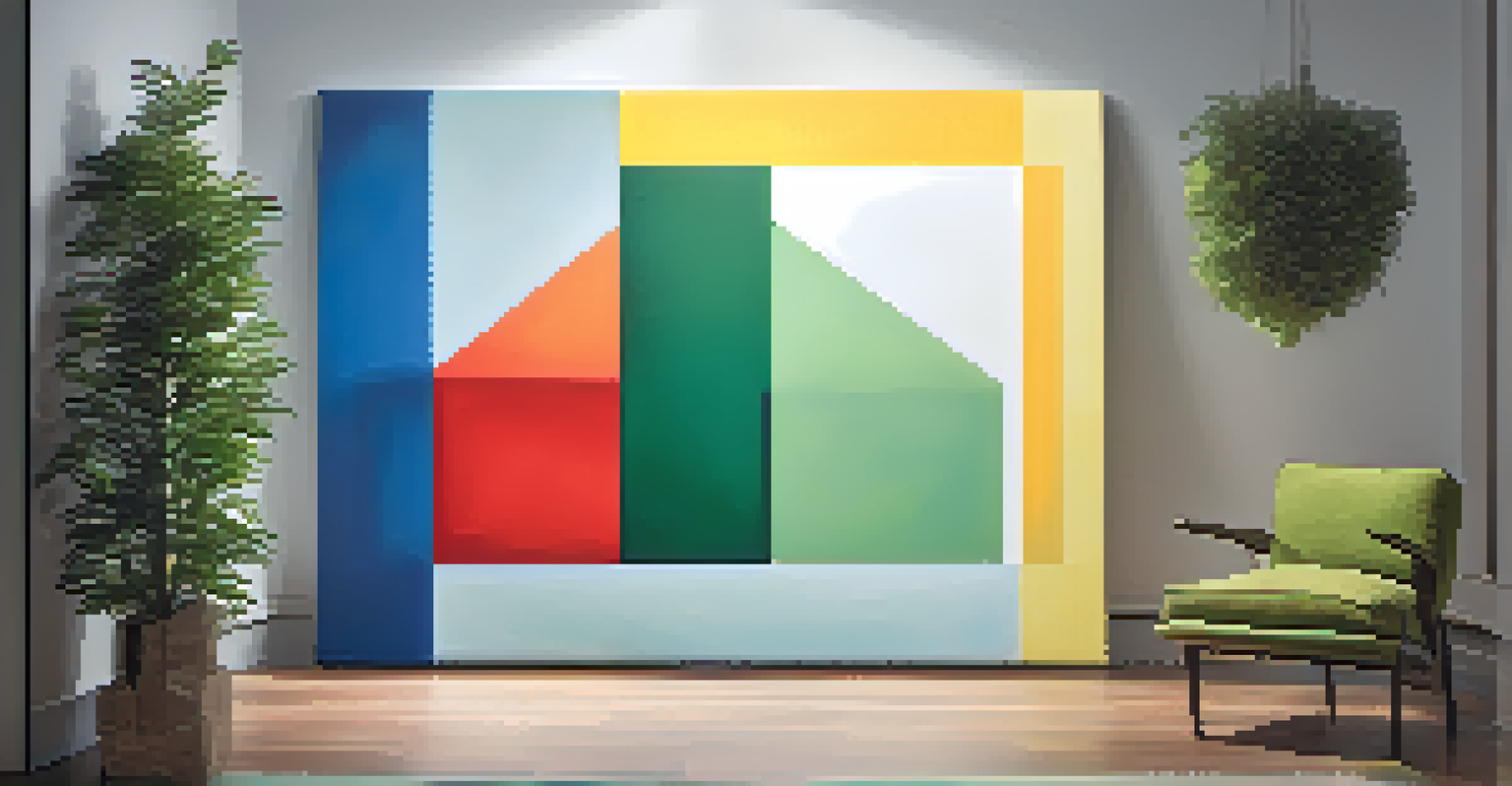The Role of Color Psychology in Fashion and Branding

Understanding Color Psychology: The Basics
Color psychology is the study of how colors affect human emotions and behaviors. Different colors can evoke various feelings, from calmness to excitement, which is why they play such a crucial role in both fashion and branding. For instance, the color blue often conveys trust and reliability, making it a popular choice for corporate branding.
Color is the keyboard, the eyes are the harmonies, the soul is the piano with many strings.
In fashion, the colors chosen can influence consumers' perceptions of style and personality. A vibrant red dress may suggest confidence and boldness, while a soft pastel outfit could evoke a sense of tranquility and approachability. Understanding these associations can help designers and brands make informed choices.
Ultimately, color psychology helps bridge the gap between consumer emotions and brand identity, creating a powerful tool for marketers and fashion designers alike. By tapping into these psychological effects, brands can craft messages that resonate more deeply with their audience.
The Impact of Color in Fashion Choices
Colors significantly impact fashion choices, often reflecting the wearer's mood or personality. For example, someone might choose to wear bright yellow to feel cheerful or opt for black for a sophisticated look. This connection between color and emotion is why many people are drawn to specific hues when selecting their outfits.

Fashion designers frequently use color to set trends and influence consumer behavior. When a designer showcases a collection dominated by a particular color, it can quickly become popular, as seen with the Pantone Color of the Year. This not only affects individual choices but also shifts the entire fashion landscape.
Colors Influence Emotions and Choices
Color psychology plays a crucial role in shaping consumer emotions and decisions in both fashion and branding.
Moreover, seasonal changes can also dictate color preferences in fashion. As the leaves turn in autumn, warm hues like oranges and browns become favored, while spring often ushers in lighter, more vibrant colors. This cyclical nature of color trends keeps the fashion world dynamic and exciting.
Branding: How Color Shapes Identity
In branding, color is a vital element that helps shape a company's identity. Brands carefully select colors to communicate their values and connect with their target audience. For instance, green is often associated with eco-friendliness, making it a popular choice for sustainable brands.
Colors are the smiles of nature.
A well-chosen color palette can enhance brand recognition and loyalty. Think about how instantly recognizable the red of Coca-Cola or the blue of Facebook is. These colors are not just visually appealing; they evoke specific feelings that align with the brands' messages.
Additionally, consistent use of color across marketing materials strengthens brand identity. When consumers encounter a brand's colors repeatedly, it reinforces their connection and familiarity, making them more likely to choose that brand in the future.
Color Trends: The Influence of Culture and Society
Color trends in fashion and branding often reflect broader cultural shifts and societal values. For example, during times of economic uncertainty, consumers may gravitate toward muted, reassuring colors, while vibrant colors might dominate in more optimistic times. This interplay between society and color choices highlights the significance of context.
Cultures also have unique color meanings, which can influence branding strategies. In some cultures, white symbolizes purity, while in others, it may represent mourning. Brands expanding internationally need to be aware of these differences to avoid miscommunication.
Cultural Context Affects Color Meaning
Understanding cultural differences in color meanings is essential for brands to effectively connect with diverse audiences.
By understanding the cultural context of colors, brands can create marketing campaigns that resonate deeply with their audience. This cultural sensitivity can lead to stronger connections and a better alignment with consumer values.
The Psychology of Color Combinations
Combining colors effectively is crucial in both fashion design and branding. The right color combinations can create harmony and balance, while poor pairings may lead to visual chaos. For example, complementary colors, like blue and orange, can create a striking visual effect that attracts attention.
Fashion designers often experiment with color combinations to express creativity and set their collections apart. A designer might pair unexpected colors, such as deep purple with bright green, to convey a sense of innovation and trendsetting. This approach can make a bold statement and capture consumer interest.
In branding, using color combinations strategically can enhance a brand's message. A tech company might use a combination of blue and silver to convey modernity and professionalism. By carefully selecting and pairing colors, brands can effectively communicate their identity and values.
The Role of Color in Marketing Strategies
Marketing strategies heavily rely on color to capture attention and convey messages. The right color can evoke emotions that lead to purchase decisions, making it essential for marketers to understand their audience's color preferences. For instance, warm colors like red and orange can stimulate excitement and urgency, prompting consumers to act quickly.
Brands often conduct research to determine which colors resonate best with their target demographics. This data-driven approach allows companies to tailor their marketing campaigns effectively. A study might reveal that younger consumers respond more positively to bold colors, while older demographics prefer muted tones.
Future Trends Embrace Sustainability
As sustainability becomes a priority, brands are likely to adopt earthy tones that reflect eco-conscious values.
Ultimately, integrating color psychology into marketing strategies can significantly impact conversion rates. When brands use colors that align with their audience's emotions and preferences, they create a more compelling narrative that encourages consumer engagement.
Future Trends in Color Psychology for Fashion and Branding
As we look to the future, color psychology will continue to evolve alongside societal changes and technological advancements. For instance, the rise of digital fashion and virtual reality may introduce new ways to experience color and its effects. Brands will need to adapt their color strategies to remain relevant in this dynamic landscape.
Sustainability is also influencing color trends, with a growing emphasis on earthy and natural tones reflecting eco-conscious values. As consumers increasingly prioritize sustainability, brands may shift towards colors that symbolize environmental responsibility, such as greens and browns.

Ultimately, the role of color in fashion and branding will remain pivotal, adapting to cultural shifts and consumer preferences. By staying attuned to these changes, brands can continue to leverage color psychology to enhance their identity and connect with consumers in meaningful ways.